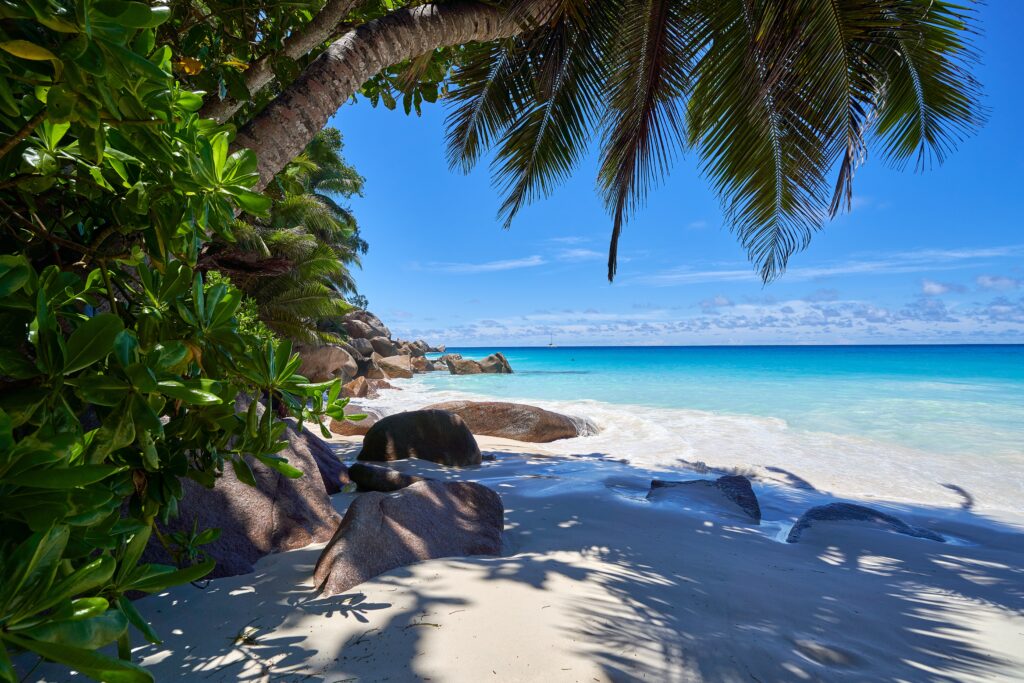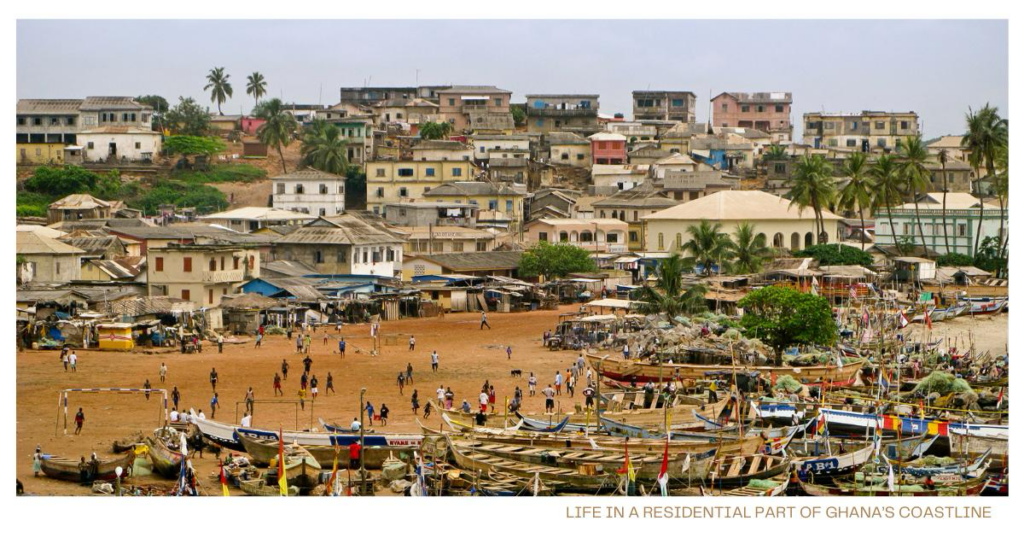We may all know that Ghana is in Africa, but until 5 years ago, I had no idea of where to pinpoint it on a map.
I know better now, and soon, so will you!
Where is Ghana situated geographically?
Ghana, a green and vibrant country is located in West Africa. It is nestled between Côte d’Ivoire to the west, Burkina Faso to the north, Togo to the east, and the Atlantic Ocean to the south. The sea in this corner of the world is known as the Gulf of Guinea.
Ghana is found at similar latitudes as parts of Colombia, Venezuela, Guyana and French Guiana, which means that it is tropical. It extends from approximately 4°-12° north of the equator, and this difference of about 8 degrees guarantees a difference in weather and vegetation.
Officially known as the Republic of Ghana this land provides visitors with a wealth of sights to see and experiences to savour. Ghana leaves an imprint that lingers in the hearts of those that visit it, and I am proof of that. One visit and you’ll be hooked and want to return again and again.
The country’s prime geographical location has played a significant role in shaping its development, economy, and strategic importance in the region and on the global stage.
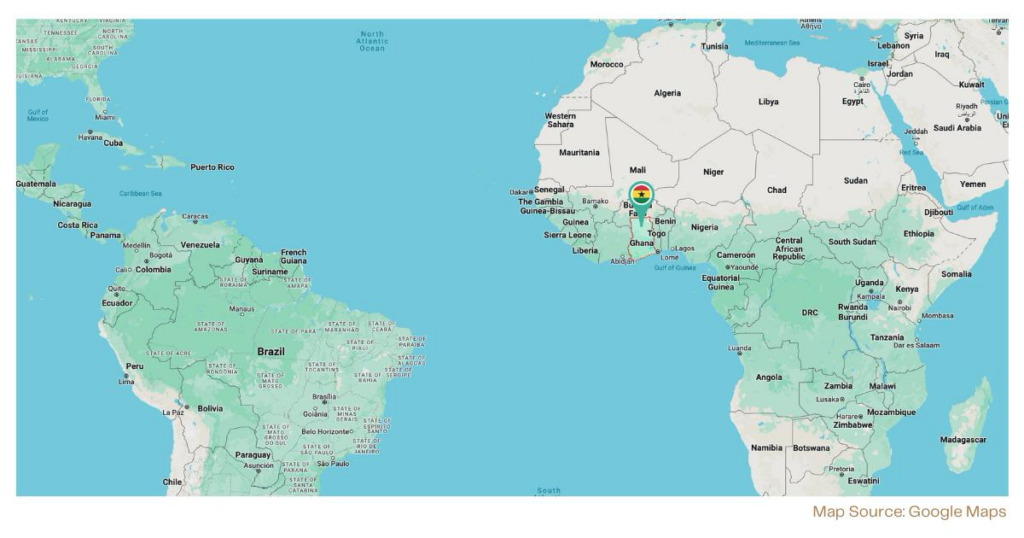
What to see in Ghana’s Regions?
Ghana’s topography is diverse and encompasses a range of landscapes, each with its own unique characteristics. The country’s location and geological history have played a significant role in shaping these features. This diversity gives rise to a range of activities and experiences for travellers.
What to see in Northern Ghana?
The northern parts of Ghana are characterised by the high plains. Now don’t let this mislead you. Instead of soaring peaks these are plains found at a height of 197 – 984 feet (60 – 300 meters) above sea level. In fact, one of the highest points in Ghana is Mount Afadja at 2,905 feet (880 meters) which looked easy to scale but proved to be very challenging to climb. Mount Afadja is found in the South-eastern area of Ghana close to the border with Togo.
So, let’s return to the North and specifically the Mole National Park. Ghana’s largest and foremost protected area is an absolute treat for nature lovers. With a wealth of wildlife including elephants, lions, black and white Colobus Monkeys and Roan Antelopes, it is a must see for any animal fan.
There is more than just nature in Northern Ghana. A visit to the town of Sirigu will expose you to rich arts and crafts. The women of the town are responsible for beautifully painted walls, pottery and basket weaving. These are all part of the artistic heritage previously at risk of being lost, that they have successfully preserved.
When you visit Ghana you will experience a myriad of beautiful stories, just like that of the women of Sirigu that will leave an impact and inspire you to do more
What to see in Southern Ghana?
The southern part of Ghana is made up of low-lying plains, coastal areas, rainforests and elevated plateaus that offer breath-taking views of the Atlantic coastline and ocean.
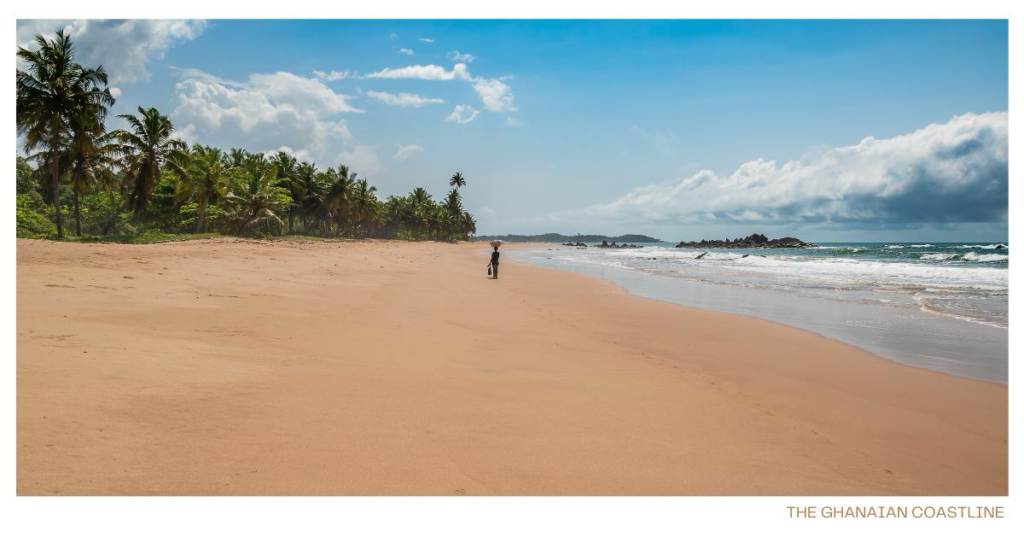
Starting from the coast, Ghana’s coastal plains offer calming tropical views of sandy beaches and palm trees. Nestled along the coasts and in the plains, are pockets of mangrove forests, previously widespread but now in need of protection, that provide a much-needed home for diverse aquatic animals and birds.
As you can imagine the coastal areas are popular destinations frequented by visitors who are enticed by their beauty and the chance to engage in water activities like surfing and fishing.
The south of Ghana is home to the Volta region with its amazing landscape of rolling hills and valleys, lagoons, rivers and waterfalls. With lush farmlands surrounding the artificial lake Volta, the hilly terrain provides a picturesque backdrop for activities such as hiking. Boat rides along the river can give you a glimpse of village life near the water while mountain biking can take you along less frequented pathways. This offers you a view of Ghana most visitors are not fortunate enough to see.
With its extensive fertile plains, Ghana is one of the leading producers of cocoa, palm oil, and other agricultural products in the region.
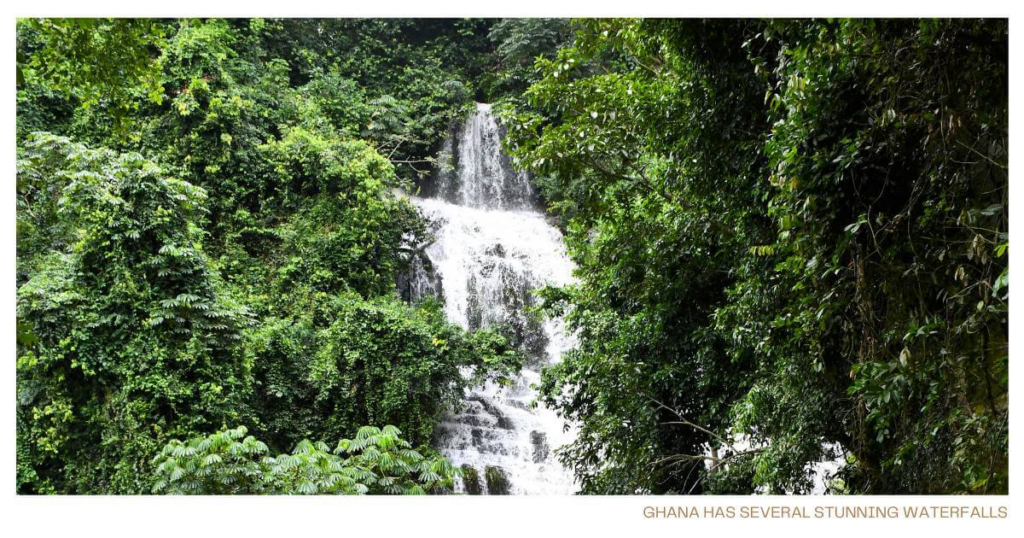
On the other hand, during the dry season, which lasts from Mid-November to March, the Harmattan winds blow from the Sahara Desert, bringing with them dry and dusty conditions. If you wear contact lenses, you may wish to bring along a pair of glasses to avoid dealing with irritated eyes. Some moisturizer would also not go amiss, but Ghana has you covered. As the largest exporter of raw shea butter and with a well developed Shea processing sector, you can find shea butter at very competitive prices. Cocoa butter is also easily available. This is a great opportunity to do some organic cosmetic shopping!
So, getting back to the weather.
As with everything in life, there are always pros and cons to every situation. The dry season is perfect for travelling up and down the country. It also offers opportunities for outdoor activities such as hiking and wildlife safaris, as the savanna becomes less dense, and wildlife becomes more visible.
The Mind, Body and Soul Tour 2024
If you have done your research, you would have seen that our Mind, Body and Soul 2024 tour is being organised in July.
“Why?”, you ask, “It falls right in the middle of the rainy season!”.
This is where I let you in on a bit of privileged insight.
In Central and Southern Ghana, heavy rains can be expected from April to the end of June. Interestingly, there is somehow, miraculously a brief respite from July to August. A minor rainy season comes back from October to the beginning of November. How magical is that?
Important: Your tour is planned during the miracle period. We may get some rain, but the sun will soon be out again, and you will get to see Ghana all lush and beautiful. It is a beautiful time to visit Ghana. I promise you that it is amazing!
Where is Ghana on the map: Things to remember
- Ghana is a vibrant country in the Gulf of Guinea in West Africa
- Ghana natural beauty includes beautiful rainforest, beaches, plateaus, waterfalls, rivers and wildlife. Many things to explore and enjoy.
- The Mind, Body and Soul Tour July 2024 is planned within the miraculous respite between rainy seasons. We’ve got you covered!
I want to know more about the tour
Additional Resources:
Learn more about the Mole National Park:
More information about Lake Volta:
See how important the Mangroves are to Ghana and what is being done to support them in this insightful video by the World Bank
[/vc_column_text][/vc_column][/vc_row]
